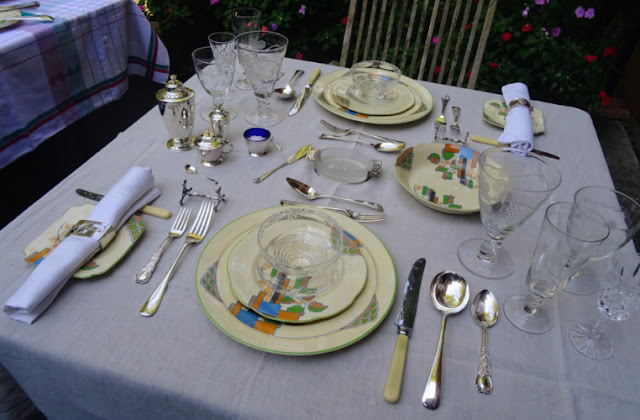 |
| Nothing dainty like a crystal finger-bowl with a matching under-plate would do for the Navy. No, Sir! In 1947, they needed fluted and pierced finger bowls (with gadroon-mounted borders) in silver-plate of heavy quality. A whopping 38,000 of them! |
Fred Othman Says: Evidence Concludes Fact That Admirals Must Be Sloppy Eaters
Washington, May 19 (UP)– Careful study of the evidence forces me to conclude that admirals are sloppy eaters. At breakfast they smear strawberry jam between their fingers. They butter their knuckles at lunch. At dinner they dip their digits in the gravy. This explains the Navy's desperate need for 38,000 fluted and pierced finger bowls (with gadroon-mounted borders) in silver-plate of heavy quality.
The gold-braided gentlemen with the sticky fingers never have learned to dampen same gently. The way they splash in their finger-bowls you'd think they were taking a bath. This is hard on the table linen. So the Navy also has asked for bids on 30,000 gadroon-mounted silver-plated finger-bowl trays to match.
Rear Admiral W. A. Buck, chief of the Bureau of Operations and Accounts and the old sea-dog in charge of finger-bowls, never did get around to the 8,000 discrepancy between trays and bowls. My guess (only a guess) is that some naval officers splash less than others and don't need trays under their bowls.
Rep. Noble J. Johnson of Ind., brought up the subject of the sailors’ gooey fingers. He was disturbed over reports of the Navy buying finger-bowls from the silverware manufacturers while it was peddling other silver finger-bowls as surplus property. The bluff old admiral, veteran of many a meal at sea, said this was not true, except in part. It takes a good, solid finger-bowl to stand up under attack by an admiral or even an ensign. During the war, the Navy had to accept some ersatz finger-bowls of cheap and flimsy silver-plate, like wedding presents.
It has turned 663 of these battered bowls over to the War Assets Administration, along with 5,376 trays, mostly dented and none with piercing, fluting for gadroon-mounted borders. Admiral Buck wasn't sure what his new finger-laving equipment would cost. Inflation seems to have hit the finger-bowl business. He figured that before the war 38,000 custom-built, finger-bowls would have nicked the Navy for $26,700. The bill for 30,000 trays to match would have been $27,000.
Congressman Johnson, who hails from Terre Haute, where oysters and admirals seldom are seen, was interested also in the Navy's stores of oyster forks. The admiral said he was fresh out of oyster forks, but had put in an order for more. We taxpayers can only hope they arrive by September, which has an "R" in it.
"And how about the 23,000 surplus salt and pepper shakers?" demanded Rep. Johnson. "With the cut glass linings?” “Pressed glass,” snorted the admiral. “Not cut glass.” “And further more,”he said, “the Navy is hanging on to nearly all of them.”
“It has offered only 627 surplus salt and pepper shakers for sale, along with 3,750 gravy ladles, 209 unlined silver-plated mustard pots, 57,775 dessert forks and other cutlery too numerous to mention here.”
“The unlined mustard pots cost $7 each; the gravy ladles $1.03. And I think the admiral, the congressmen and I have answered all pertinent questions as to naval eating habits, except one: What is a gadroon-mounted border on a silver finger-bowl?”
“It is a rim with bumps on it. Intended to discourage splashing.” – By Frederick C. Othman United Press Staff Correspondent, 1947🍽Etiquette Enthusiast, Maura J. Graber, is the Site Editor for the Etiquipedia© Etiquette Encyclopedia


























